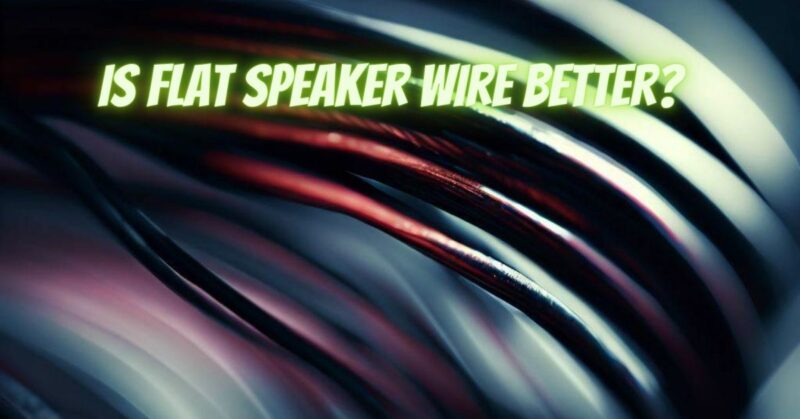When it comes to speaker wire, the debate between traditional round wire and flat wire has sparked considerable discussion among audio enthusiasts. Flat speaker wire, with its unique design and advantages, has gained popularity in recent years. In this article, we will delve into the pros and cons of flat speaker wire, providing you with a comprehensive understanding to help you determine whether it is the right choice for your audio setup. Let’s unravel the mysteries of flat speaker wire!
The Advantages of Flat Speaker Wire:
- Easy Installation: Flat speaker wire is often praised for its slim and flexible design. It can be discreetly placed along walls, under carpets, or even painted over, resulting in a clean and visually unobtrusive installation. This flexibility makes it an excellent option for situations where traditional round wire may be difficult to hide or route.
- Reduced Signal Loss: Flat speaker wire typically has a larger surface area compared to round wire of the same gauge. This increased surface area can help minimize resistance and signal loss, potentially resulting in improved audio performance, especially over longer cable runs.
- Versatile Applications: Due to its slim form factor, flat speaker wire is well-suited for installations in tight spaces or where a low-profile solution is desired. It can be particularly useful for wall-mounted speakers, home theater systems, or multi-room audio setups, where running cables discreetly is essential.
The Considerations of Flat Speaker Wire:
- Power Handling Capacity: Flat speaker wire may have limitations in terms of power handling capacity compared to round wire. The thin and narrow conductors in flat wire may not be able to handle extremely high power levels without the risk of overheating or signal degradation. It is important to consider the power requirements of your speakers and ensure that the flat wire you choose can handle the necessary power levels.
- Higher Cost: Flat speaker wire often comes at a higher price compared to traditional round wire. The manufacturing process, specialized design, and unique construction contribute to the increased cost. It’s important to weigh the benefits of flat wire against your budget and specific installation requirements.
- Compatibility: While flat speaker wire is generally compatible with most speaker terminals and connectors, its unique design may require specific connectors or adapters. It is crucial to ensure compatibility with your audio equipment and consider any additional costs associated with specialized connectors.
Conclusion:
Flat speaker wire offers advantages in terms of easy installation, reduced signal loss, and versatility in tight spaces. Its slim and flexible design allows for discreet placement, making it an attractive option for aesthetically-conscious installations. However, it’s important to consider factors such as power handling capacity, cost, and compatibility before making a decision. Traditional round wire remains a reliable choice for most audio setups and is generally more cost-effective. Ultimately, the suitability of flat speaker wire depends on your specific needs, preferences, and the requirements of your audio system. Assess your installation constraints and audio goals to determine whether the benefits of flat wire outweigh any potential limitations.


